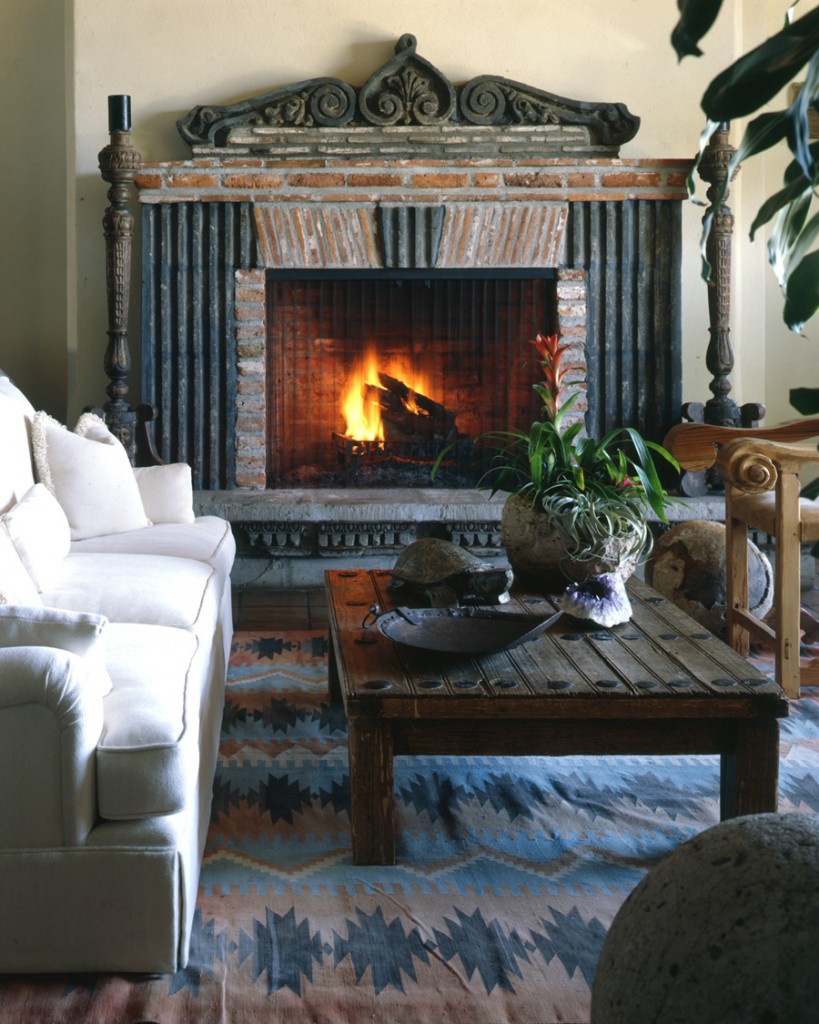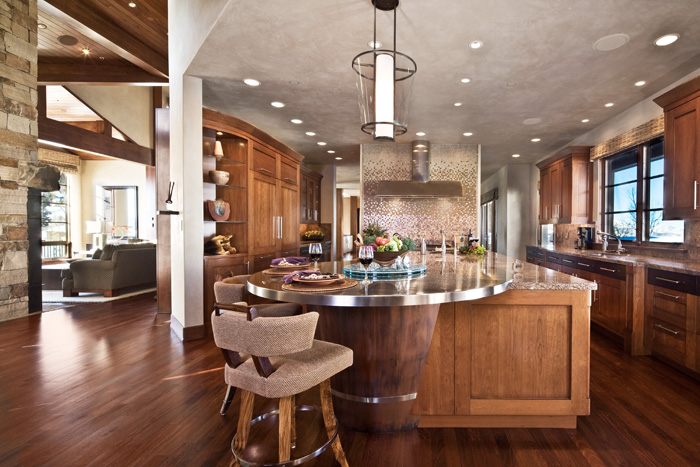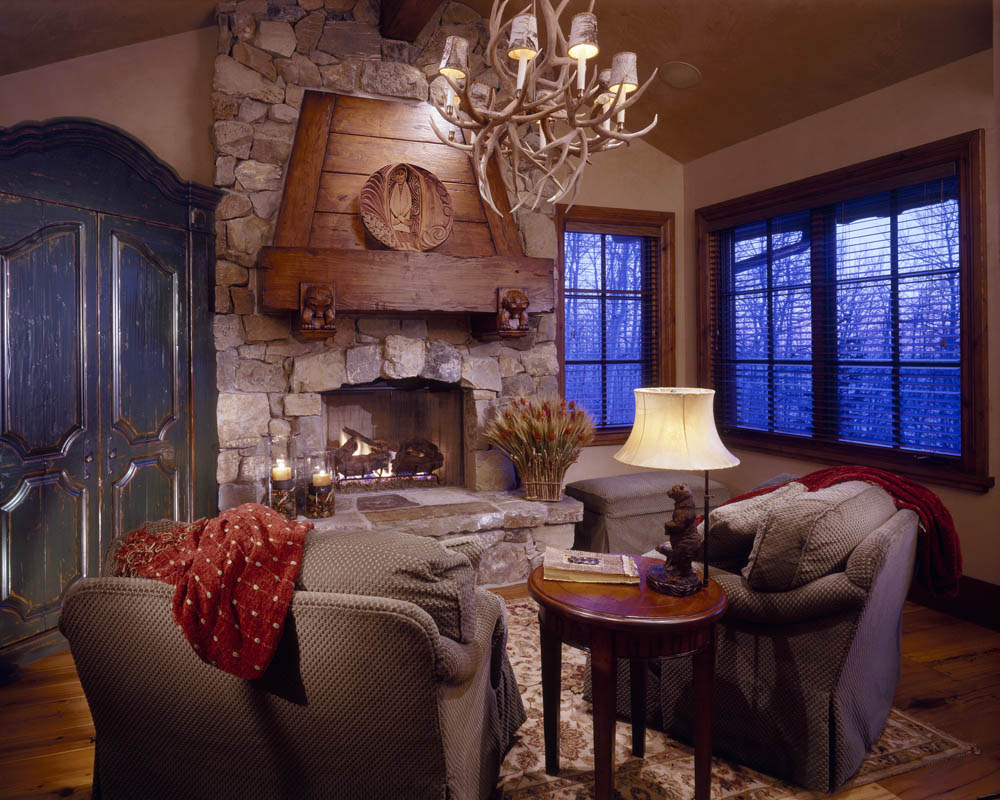Every room could use a touch of green. If you’re thinking about pistachio walls, chartreuse pillows and teal upholstery, think again. When you’ve got a thing for green, bringing the outdoors in with live plants is the ultimate nod to nature.
Warm tones fill this great room, so the foliage placed sporadically throughout are excellent for adding coolness and balancing the earthy browns and reds.
Even the smallest hint of greenery can make a huge impact. This all-white space is a great example of that. Too much white can sometimes wash out a room. But the sprawling plants toward the left give this space the balance it needs.
You can’t ignore how this romantic oasis is framed by greenery on either side. These homeowners might as well be in Hawaii, or perhaps in a Mexican villa!
If you are worried about the upkeep involved with live plants, there’s nothing wrong with adorning your mountain style home with artificial foliage. There’s no watering required, and you won’t have to worry about which plants need to be in direct sunlight. You might not be able to tell if the potted plant on this coffee table is the real deal or not. But one thing is for sure — it’s simple yet appropriate for the surrounding space. One plant could be all the green you need.
This gathering space represents the best of both the indoors and outdoors. Floor to ceiling windows provide a breathtaking view and the seating nearby make guests feel as if they’re already outside, perhaps sitting around a campfire. Since this space is already packed with natural elements and colors, the greenery surrounding it is fitting. What you’ll notice in almost all of these spaces is that the greenery stretches up toward the ceiling. Don’t assume that foliage is limited to potted plants on a coffee table. Tall or elevated greenery helps add height to even the most cramped space.
Incorporating plants into your home could run the gamut from underdone to over the top. Let our team at Paula Berg Design Associates customize a mountain home design that smartly brings greenery into your living space!

















